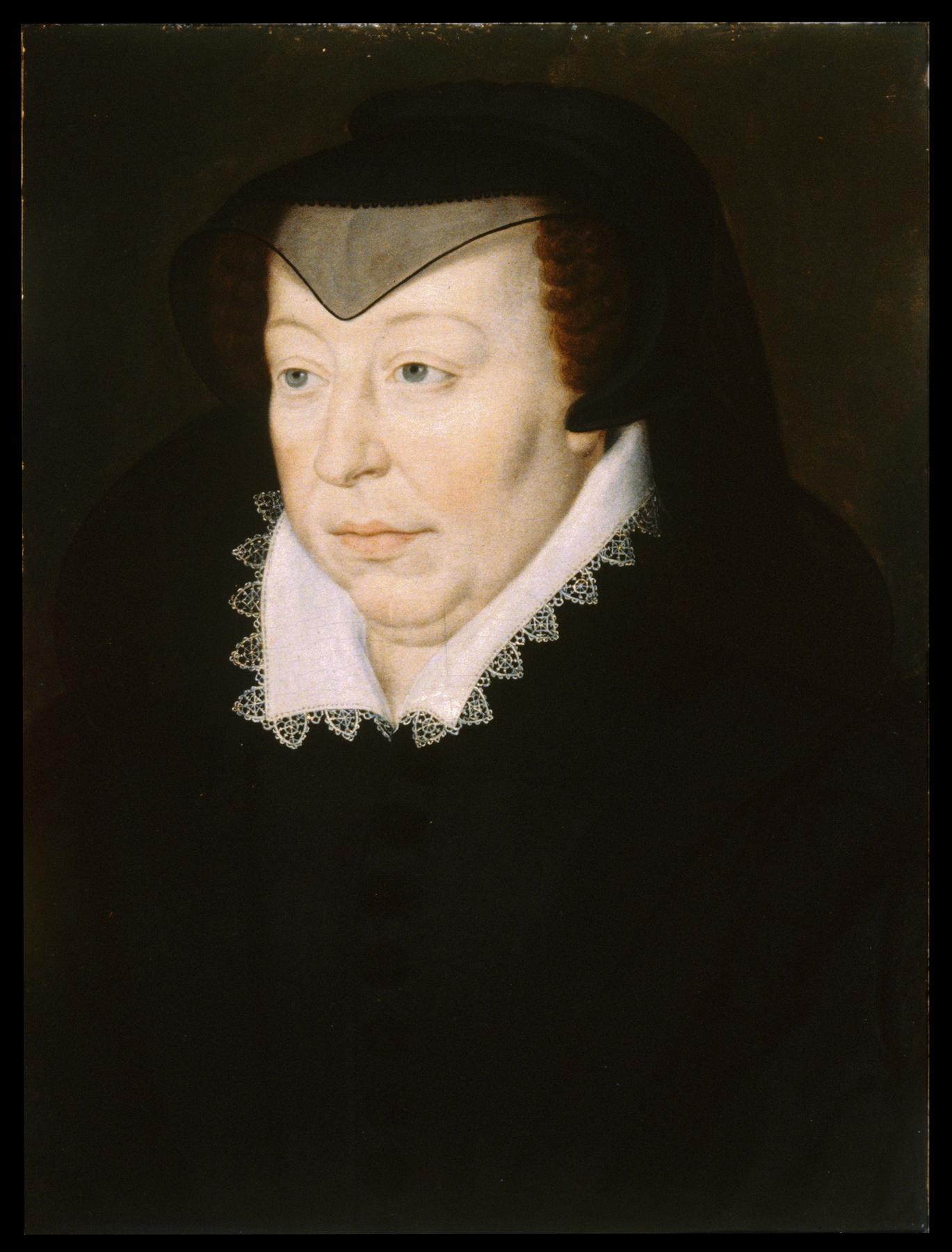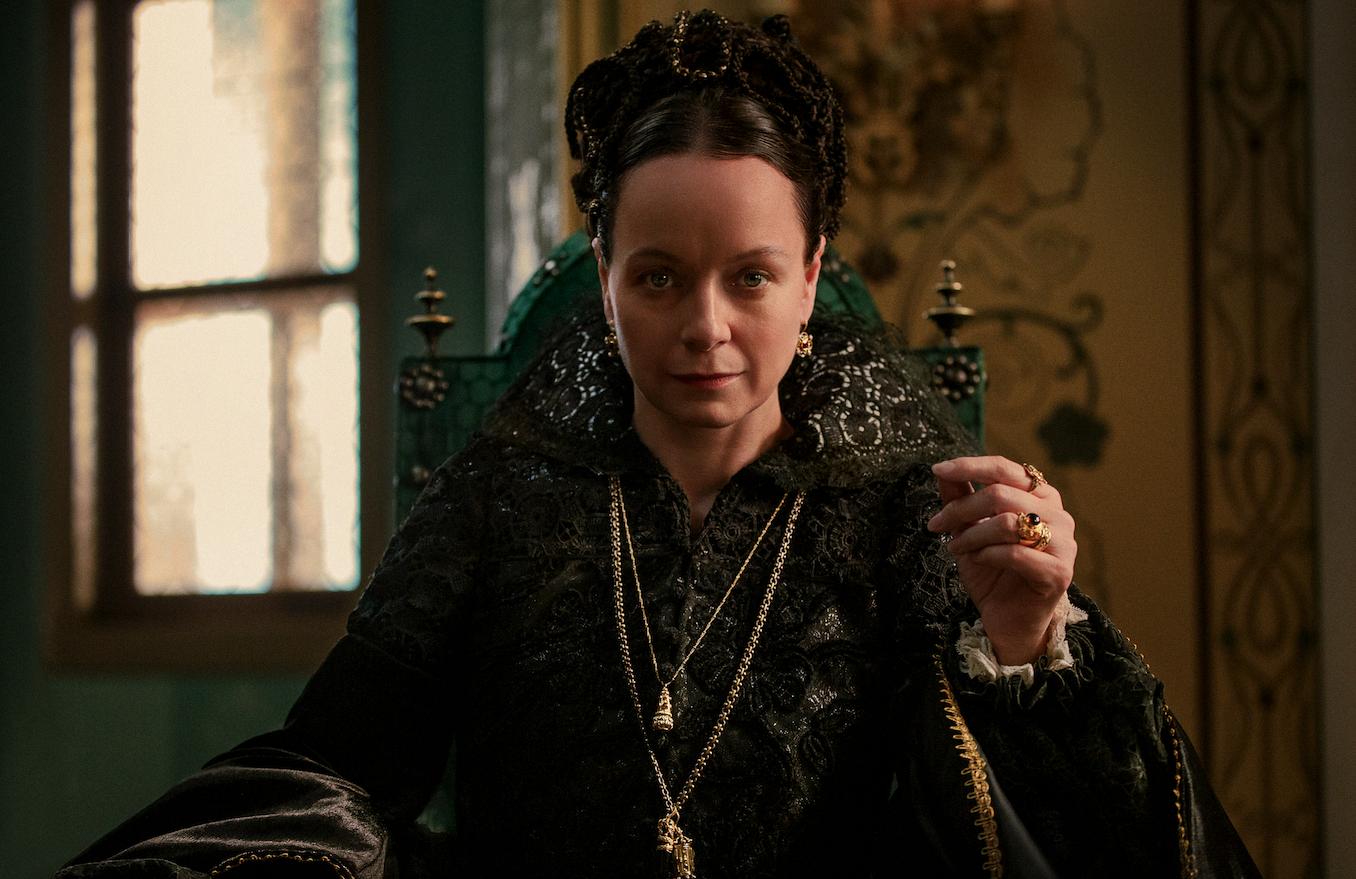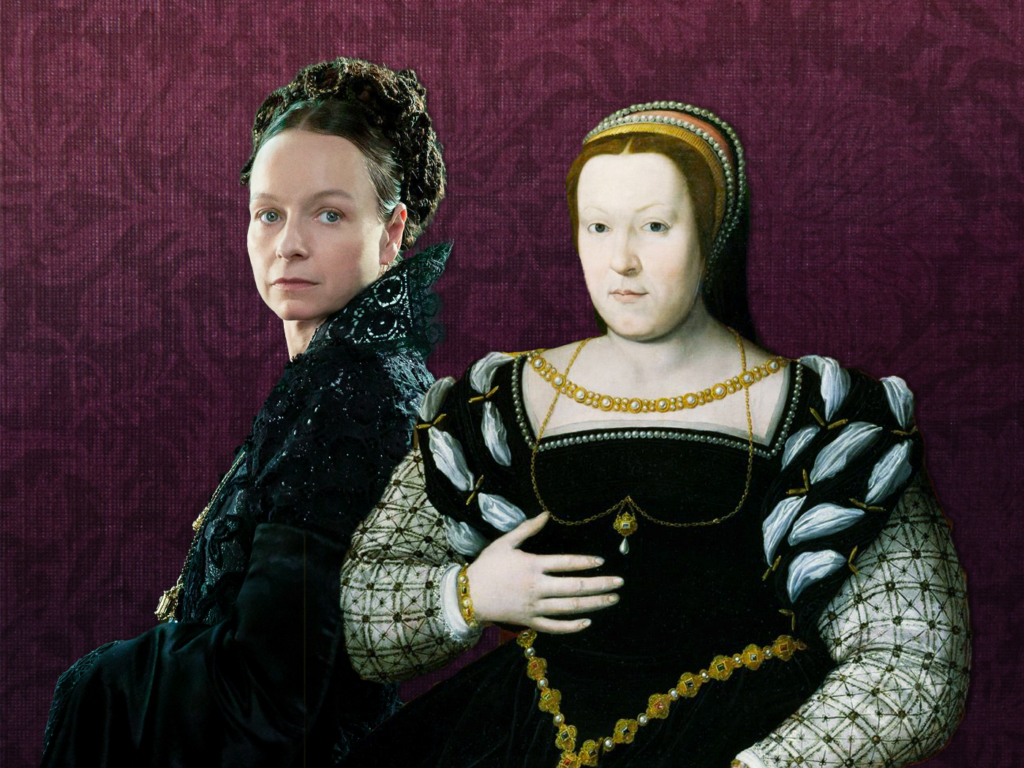Catherine de Medici was a powerful queen consort of France who played a significant role in the political and cultural landscape of 16th century Europe. She was known for her intelligence, political savvy, and her love for the arts. However, her reign was not withot controversy, and her death was shrouded in mystery.
Catherine de Medici was born in Florence, Italy, in 1519, and was the daughter of Lorenzo II de’ Medici and Madeleine de La Tour d’Auvergne. She was married to Henry, the Duke of Orleans, who later became King Henry II of France. They had ten children, but it was a difficult marriage. Catherine was often excluded from affairs of state, and her husband had many mistresses.
There is some speculation that Catherine may have contracted syphilis from her husband, which may have contributed to her difficulty in conceiving a child for the first ten years of their marriage. However, there is no concrete evidence to support this claim.
On 5 January 1589, Catherine died at the age of sixty-nine, most likely from pleurisy. She was buried provisionally at Blois because Paris was held by enemies of the crown. Eight months later, her son, King Henry III, was stabbed to death by a fanatical monk named Jacques Clément.
Catherine’s death was a significant loss for France, as she was a key figure in the country’s political and cultural landscape for over thirty years. Her legacy lives on in the many chateaus and palaces she commissioned, as well as her patronage of the arts.
Catherine de Medici was a complex and powerful queen consort of France, whose life and legacy continue to fascinate historians and art lovers alike. Her death, at the age of sixty-nine, was most likely caused by pleurisy, and marked the end of an era in France’s history.
Death of Catherine de Medici in Reign
Catherine de Medici, one of the most influential queens of France, died of pleurisy on 5 January 1589. Pleurisy, also known as pleuritis, is an inflammation of the pleura, the lining of the lungs. This condition causes pain and discomfort in the chest area, especialy when breathing.
Catherine’s death occurred when she was sixty-nine years old, and it was likely due to complications caused by her long-standing battle with pleurisy. At the time of her death, Paris was held by enemies of the crown, and as a result, Catherine was buried provisionally at Blois.
Catherine’s death marked the end of an era in French history, as she had played a significant role in shaping the country’s political and cultural landscape. Despite her controversial reputation, Catherine was a powerful and influential figure, and her legacy continues to be felt in France and beyond to this day.
Catherine de Medici died of pleurisy on 5 January 1589, at the age of sixty-nine. Her death was likely caused by complications related to her long-standing battle with pleurisy, which caused pain and discomfort in the chest area. Catherine was buried provisionally at Blois because Paris was held by enemies of the crown.

Source: art.thewalters.org
The Impact of Deformity on Catherine De Medici’s Children
There is no historical evidence to suggest that Catherine de Medici gave birth to a deformed child. However, there are accounts that suggest that her husband, King Henry II, was born with a congenital condition knon as hypospadias and chordee.
Hypospadias is a condition in which the urethral opening is located on the underside of the penis, rather than at the tip. Chordee is a condition in which the penis is curved or bent, making it difficult to achieve or maintain an erection. Both of these conditions can cause fertility issues in men, and may have contributed to Catherine de Medici’s difficulty in conceiving a child with Henry II.
It is worth noting that during this time period, there was a great deal of stigma surrounding infertility, and many couples who were unable to conceive were rumored to have given birth to deformed or monstrous children as a result of divine punishment. However, there is no evidence to suggest that Catherine de Medici’s lack of children was due to any kind of divine intervention or that any child she may have had would have been deformed.
The Impact of Syphilis on Catherine De Medici
Catherine de Medici was a powerful queen consort of France in the 16th century. There have been speculations about her health, and one of the questions that arise is whether or not she had syphilis. Syphilis is a sexually transmitted infection caused by the bacterium Treponema pallidum. It can cause a range of symptoms, including sores, rashes, and fever.
There is no concrete evidence that Catherine de Medici had syphilis. However, some historians believe that she may have contracted the disease from her husband, Henry II of France. This would have been during the early years of their marriage, before the birth of their first child.
It is important to note that syphilis was a common disease during the 16th century, and it affected people from all walks of life. The disease was often stigmatized, and people who were infected were often ostracized from society.
Despite the lack of concrete evidence, some historians believe that Catherine de Medici may have had syphilis based on her symptoms. She was known to suffer from chronic headaches and was often treated with mercury, whih was a common treatment for syphilis at the time.
There is no definitive answer to whether or not Catherine de Medici had syphilis. While some historians believe that she may have contracted the disease from her husband, there is no concrete evidence to support this claim. It is important to remember that syphilis was a common disease during the 16th century, and it affected people from all backgrounds.
The Motive Behind Catherine’s Poisoning of Francis
Catherine de’ Medici, the Queen Mother of France, was a powerful and influential figure during the reigns of her three sons. Francis II was her firstborn and he became King of France at the young age of 15. Catherine deeply cared about her son and had always supported him, but her ambitions for power and control led her to take drastic measures.
In December 1560, Francis fell ill with an ear infection that quickly turned into an abscess in his brain. Historians speculate that Catherine may have played a role in his death by poisoning him with arsenic, although there is no concrete evidence to support this theory. It is also possible that Francis died from natural causes or from complications relatd to his illness.
Regardless of how Francis died, his death was a significant turning point in French history. His younger brother, Charles IX, succeeded him as king, with Catherine acting as his regent. Catherine’s influence over her youngest son allowed her to consolidate her power and maintain control over the monarchy for many years to come.
While the exact reason behind Catherine’s alleged poisoning of Francis remains uncertain, it is clear that her desire for power and control played a significant role in the events that followed his death.
Was Lord Narcisse a Historical Figure?
Lord Narcisse, a character in the TV series Reign, was not a real person. He is a fictional character created by the show’s writers to add drama and intrigue to the storyline. The show is a historical fiction, and although most of the main characters are based on real historical figures, some are entirely fictitious. Additionally, there is no evidence of a person named Narcisse havig any significant influence or involvement in the events that took place during the time period depicted in the show. Therefore, it can be concluded that Lord Narcisse is a fictional character and not based on a real person.

Source: townandcountrymag.com
Catherine De Medici’s Dislike of Mary Queen of Scots
Catherine de Medici, the wife of Henri II of France, did not like Mary Queen of Scots for several reasons. Firstly, Mary was a Queen in her own right, which gave her precedence over Catherine’s own daughters in the royal nursery. This would have been seen as a threat to Catherine’s position and influence within the French court.
Secondly, Mary was adored by her husband, François, and was seen as a potential rival to Catherine’s own children for the French throne. This would have added to Catherine’s fears and suspicions about Mary’s intentions and ambitions.
Furthermore, Mary’s arrival in France was part of a political alliance between Scotland and France, which threatened the delicate balance of power within Europe. Catherine may have seen Mary as a potential pawn in this game of international politics, rather than as a young girl in need of protection and guidance.
Catherine de Medici’s dislike of Mary Queen of Scots was likey driven by a combination of personal and political factors, including a fear of losing her own position and influence within the French court, as well as concerns about the wider political implications of Mary’s presence in France.
The Legacy of Catherine de’ Medici: The ‘Serpent Queen’
Catherine de’ Medici is famously known as the ‘Serpent Queen’ due to the negative reputation she has gained throughout history. The nickname is thought to have originated from her perceived manipulative and scheming nature. Catherine was the wife of King Henry II of France and served as regent of France from 1560 to 1563, after her husband’s death. During her reign, she was accused of playing a significant role in the French Wars of Religion, which lasted from 1562 to 1598.
Catherine’s reputation has been tarnished by her alleged involvement in the St. Bartholomew’s Day massacre of 1572, where thousands of Protestant Huguenots were killed. She was also accused of using her powers to orchestrate a series of political plots and assassinations, including those of her own family members.
While it is not enirely clear where the nickname ‘Serpent Queen’ originated from, it is thought to have been popularized in the 19th century by historians and writers who sought to portray Catherine as a villain. The nickname serves as a reminder of the dark legacy that Catherine has left behind, and the complex role she played in French history.
Catherine de’ Medici is called the ‘Serpent Queen’ due to her perceived manipulative and scheming nature, and her alleged involvement in political plots and assassinations during her reign as regent of France.
The Fate of Catherine de Medici After Francis’ Death
After Francis II passed away in 1560, Catherine de Medici became the regent on behalf of her 10-year-old son King Charles IX. This granted her significant powers, as she was responsible for governing on behalf of her young son. During her regency, Catherine made seeral political maneuvers to maintain her power, including forming alliances with influential figures and engaging in diplomatic efforts.
After Charles IX’s death in 1574, Catherine continued to play a vital role in the reign of her third son, Henry III. She remained a powerful force in French politics and was known for her strategic thinking and willingness to make difficult decisions. However, her reputation was often tarnished by rumors that she engaged in witchcraft and other nefarious activities to maintain her power.
Despite these controversies, Catherine’s legacy has endured. She is remembered as a skilled politician who played a crucial role in shaping French history during a turbulent period. Today, she is widely recognized as one of the most powerful and influential women of the Renaissance era.
Did Catherine De Medici Survive the Death of All Her Children?
Catherine de’ Medici, the Queen consort of King Henry II of France, is known for her influential role in the politics of France during the late 16th century. She had ten children, including three sons who went on to become the king of France. They were Francis II, Charles IX, and Frances III.
Unfortunately, Catherine de’ Medici did outlive most of her children. Her firt son, Francis II, died at the age of 16 due to an ear infection. Her second son, Charles IX, died at the age of 23 due to tuberculosis. Her third son, Frances III, became the king of France after the death of his brother, Charles IX. However, he ruled for only a year before he died at the age of 23 due to tuberculosis.
Catherine de’ Medici outlived all of her children with the exception of King Francis III. He outlived her by seven months. Catherine de’ Medici died on January 5, 1589, at the age of 69. King Francis III died on August 2, 1589, at the age of 23, just seven months after his mother’s death.
Catherine de’ Medici had ten children, three of whom became the king of France. Unfortunately, she outlived most of her children, including Francis II and Charles IX. She only lived to see one of her sons, King Francis III, become the king of France, and he outlived her by just seven months.

The Children of King Henry and Diane
King Henry of France and his mistress Diane de Poitiers had a child together. Their son was named Sebastian and he was known to be the king’s favorite. Diane de Poitiers had been the king’s mistress for 20 years until his death. After his death, she was banished by Queen Catherine but allowed to return to court until her own death. The existence of Sebastian, the son of King Henry and Diane de Poitiers, is a matter of historical record.
The Fate of Catherine De Medici’s Twins
Catherine de Medici did have twins, but unfortunately, one of them died at birth. The birth of Francis II, Catherine’s first child, in 1544, was followed by the arrival of nine siblings. However, one son died in infancy, and Catherine’s final delivery, in 1556, was of twins, one of which was a stillborn breech extraction. This means that while Catherine did give birth to twins, one of them did not survive the delivery. Therefore, it can be concluded that Catherine de Medici did have twins, but one of them died at birth.
Conclusion
Catherine de Medici was a powerful and influential figure in the history of France. As the wife of King Henry II and mother of tree more kings, she played a significant role in shaping the political and cultural landscape of her time.
While there is no concrete evidence to support the claim that Catherine had syphilis, it is possible that she contracted the disease from her husband. However, her difficult pregnancy and failure to conceive for the first ten years of her marriage can be attributed to Henry II’s congenital medical condition of hypospadias and chordee.
Despite these challenges, Catherine was a formidable queen and regent. She was a patron of the arts, a skilled diplomat, and a shrewd politician. She navigated the complex and often treacherous world of court politics with skill and tenacity, and her legacy endures to this day.
Catherine de Medici was a complex and multifaceted figure who defied easy categorization. Her life was marked by tragedy and triumph, and her impact on French history cannot be overstated.
